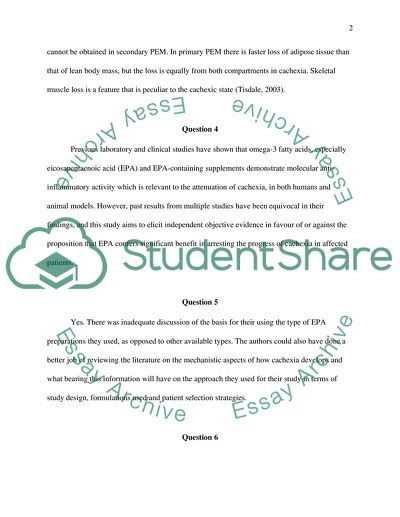Cite this document
(Symptoms of Cancer Cachexia Assignment Example | Topics and Well Written Essays - 2513 words, n.d.)
Symptoms of Cancer Cachexia Assignment Example | Topics and Well Written Essays - 2513 words. Retrieved from https://studentshare.org/health-sciences-medicine/1540181-critical-analysison-a-study-cancer-cachexia-omega-3-benefits
Symptoms of Cancer Cachexia Assignment Example | Topics and Well Written Essays - 2513 words. Retrieved from https://studentshare.org/health-sciences-medicine/1540181-critical-analysison-a-study-cancer-cachexia-omega-3-benefits
(Symptoms of Cancer Cachexia Assignment Example | Topics and Well Written Essays - 2513 Words)
Symptoms of Cancer Cachexia Assignment Example | Topics and Well Written Essays - 2513 Words. https://studentshare.org/health-sciences-medicine/1540181-critical-analysison-a-study-cancer-cachexia-omega-3-benefits.
Symptoms of Cancer Cachexia Assignment Example | Topics and Well Written Essays - 2513 Words. https://studentshare.org/health-sciences-medicine/1540181-critical-analysison-a-study-cancer-cachexia-omega-3-benefits.
“Symptoms of Cancer Cachexia Assignment Example | Topics and Well Written Essays - 2513 Words”, n.d. https://studentshare.org/health-sciences-medicine/1540181-critical-analysison-a-study-cancer-cachexia-omega-3-benefits.


